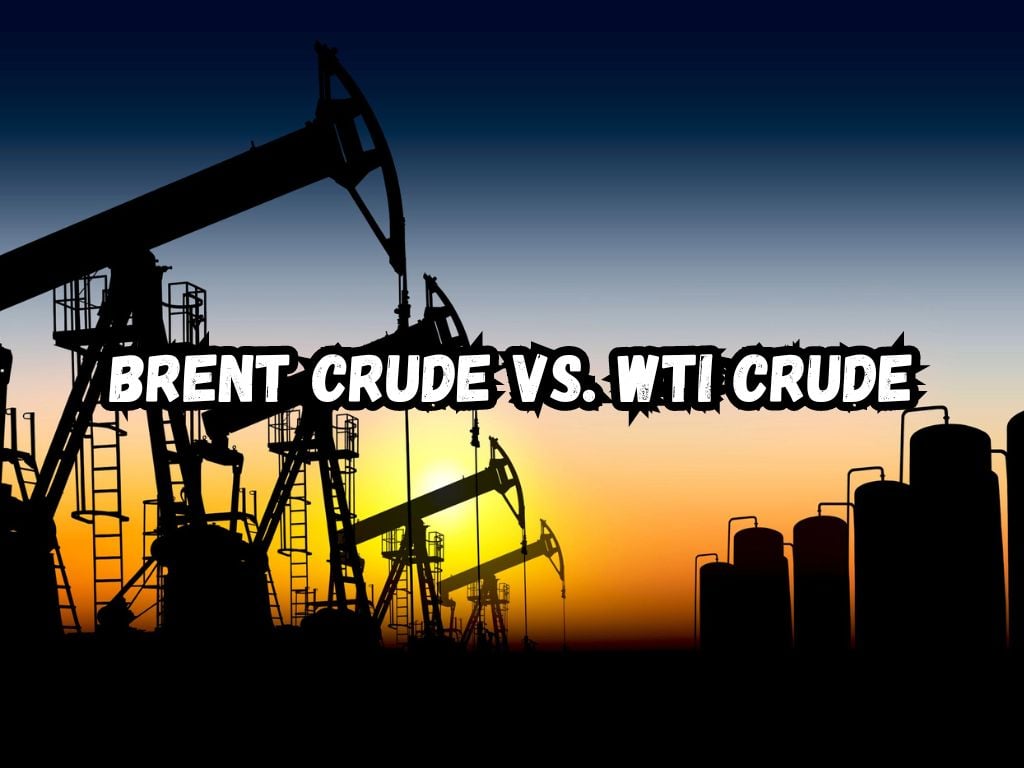The dichotomy of Brent Crude and West Texas Intermediate (WTI) is at the epicenter of the world’s oil markets.
Grasping the distinction between these two oil benchmarks is crucial for investors, industry professionals, and anyone interested in the dynamics of global energy.
Let’s embark on a methodical assessment of Brent crude vs WTI crude, the reasons behind their price disparities, and their profound impact on the global economy.
What is Brent Crude Oil?
Hailing from the North Sea, Brent Crude Oil stands as a major trading classification of sweet light crude oil. It garners its reputation from the Brent Oil Field and other sites, including Forties, Oseberg, and Ekofisk.
Predominantly used in European markets, Brent is ideal for gasoline refining due to its low sulfur content and light density.
Brent acts as a benchmark for the purchase of approximately two-thirds of the world’s internationally traded crude oil supplies.
Its accessibility to waterways and the vast international shipping routes make Brent a reliable indicator for global oil prices. As such, it typically commands a higher price due to its broader market reach.

What is WTI Crude Oil?
West Texas Intermediate, synonymous with Texas light sweet, is a grade of crude oil used as a benchmark in oil pricing.
Its origins in the United States, namely the oil fields of Texas, underline its significance. WTI’s high quality makes it desirable for refining into gasoline and thus, an asset to the energy markets.
WTI Crude is primarily traded on the New York Mercantile Exchange (NYMEX). Its landlocked disposition means transportation often requires pipelines, which, compared to shipping, imposes logistical constraints and influences its market value.
Brent Crude Vs WTI Crude: Key Differences
The distinctions that set Brent and WTI apart lie not just in their geographic origins but also in their properties and market dynamics.
One notable difference is the price. Historically, WTI crude traded at a premium to Brent. However, this trend has shifted due to a variety of factors, including transport bottlenecks and regional supply variations.
Geography plays a pivotal role in their classification. Brent Crude, with its extraction rooted in the North Sea, has a more international orientation.
WTI, being sourced from U.S. oil fields, caters more to the domestic market. This fundamental geographical separation affects their market availability and trading volumes.
Their chemical compositions underscore another difference. Brent is slightly heavier and less sweet compared to WTI, which is lighter and sweeter. Despite these subtle differences, both serve as high-quality oils, desirable for gasoline refinement.
When it comes to trading, Brent Crude’s pricing is used to set the price for approximately two-thirds of the world’s trades, while WTI predominates in the U.S. market decisions.
Understanding Oil Benchmarks
Benchmarks like Brent and WTI serve as a reference point for buyers and sellers, dictating price conformance across the globe. They help standardize prices in the otherwise complex oil markets.
Their influence extends beyond mere pricing; they serve as a gauge for the economic health of oil-exporting countries and the energy sector at large.
Investors and market analysts scrutinize the spread between Brent and WTI to extract insights into global economic trends, regional discrepancies, and market sentiments.
This spread, or price differential, is a barometer of varying factors including supply disruptions, geopolitical tensions, and inventory changes.

Investment Implications
Investors keen on dipping their toes into the crude oil markets must heed the nuances between Brent and WTI.
The discrepancies in pricing between them can be attributed to factors like transportation costs, supply-chain efficiencies, and geopolitical changes. Understanding these forces is paramount for sound investment decisions.
One must consider the political climate as well. As geopolitical events can create volatility in oil prices, discerning these potential risks is essential.
Brent, with its global purview, often reacts to international incidents, while WTI may be swayed by domestic U.S. policies and infrastructure developments.
As one mulls over investment strategies, it is pivotal to keep abreast of market developments and to identify which crude benchmark aligns with one’s investment thesis.
Some might focus on the broad, international scope that Brent pricing provides, while others may find WTI’s American-centric market to be more aligned with their portfolio goals.
Frequently Asked Questions
Why is Brent more expensive than WTI?
The answer typically lies in transportation ease and market accessibility—the two aspects where Brent has an advantage.
How do recent events affect Brent and WTI prices?
Usually, any disturbance in the oil-producing regions or shifts in the geopolitical landscape can induce price fluctuations.
Can I invest directly in Brent Crude or WTI?
Though one cannot invest directly in the physical oil, futures contracts and other financial instruments are available for investment purposes.
Conclusion
The dance of Brent Crude versus WTI Crude is one of finesse and complexity, reflective of the intricate world of global oil markets.
Through a lens sharpened by the knowledge of their differences, one can better appreciate the subtleties that govern their pricing and influence over the energy sector.
It is a discourse that extends beyond simple economics into the realm where geography, politics, and commerce intersect. By understanding these benchmarks, we gain vital insights into the broader narratives of global trade and energy economics.


 Tags:
Tags:










